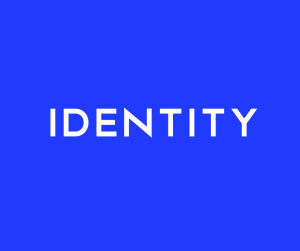The creative constraint paradox: Why regulatory boundaries spark better innovation
Compliance doesn’t have to be creativity’s enemy. The best agencies know that regulatory constraints can actually fuel more innovative thinking, not stifle it. Janet Dodd, Chief Strategy Officer at Identity, explores how working within boundaries pushes teams to find breakthrough solutions that are both compliant and compelling.
There’s a persistent myth in our industry that compliance kills creativity. That regulatory frameworks are creativity’s natural enemy, boxing us into safe, sanitised solutions that lack spark or soul. But after decades of delivering major events for government departments and heavily regulated sectors, I’d argue the opposite is true.
Constraints don’t crush creativity; they channel it.
The discipline of boundaries
When we work within regulatory boundaries, we’re forced to think harder, dig deeper, and find solutions that others might miss. It’s the difference between a river flowing freely across a plain and one carving through rock, the constraints create the most spectacular results.
Take government communications. At the very least, the Civil Service Code demands accessibility requirements ensure inclusivity and procurement rules govern supplier selection. These aren’t creative, they’re creative catalysts. They force us to find ways to engage audiences authentically without crossing lines, to design experiences that work for everyone, and to maximise impact within defined parameters.
We’ve seen this repeatedly across many events that we’ve been privileged to deliver. The tightest briefs often produce the most breakthrough thinking because they eliminate the paralysis of infinite choice.
Innovation through intelligent constraint
The key is understanding that compliance isn’t about limiting what you can do, it’s about being smarter about how you do it. Instead of seeing regulations as walls, view them as the foundation upon which innovation is built.
Financial services events require stringent data protection and clear disclaimers. Rather than treating these as afterthoughts, we embed them into the creative concept from day one. Healthcare communications need clinical accuracy and regulatory approval. So we bring medical experts into the ideation process, not just the sign-off stage.
This approach transforms compliance from a creative roadblock into a creative brief. What story can we tell within these parameters? How can we surprise and delight while staying within bounds? How do we make mandatory messaging feel natural, not forced?
Building compliance into creativity
The most successful agencies don’t bolt compliance onto creative concepts, they build it in. Start every brief by understanding not just what you want to achieve, but what you cannot compromise on. Map the non-negotiables early, then let creativity flow within those channels.
This means involving compliance teams at concept stage, not final review. It means understanding the spirit of regulations, not just the letter. And it means seeing regulatory requirements as part of the creative challenge, not separate from it.
The competitive advantage
Here’s what many agencies miss: clients in regulated sectors aren’t looking for rule-breakers. They’re looking for rule-shapers. They want partners who can navigate complexity while delivering impact. Who understand that the most innovative solution isn’t necessarily the most disruptive, but the most intelligent.
In a world where regulatory scrutiny is increasing, not decreasing, this capability becomes a competitive advantage. The agencies that thrive will be those that see compliance not as a constraint to work around, but as a framework to work within.
That’s where true creative problem-solving begins. Not in spite of the rules, but because of them.



